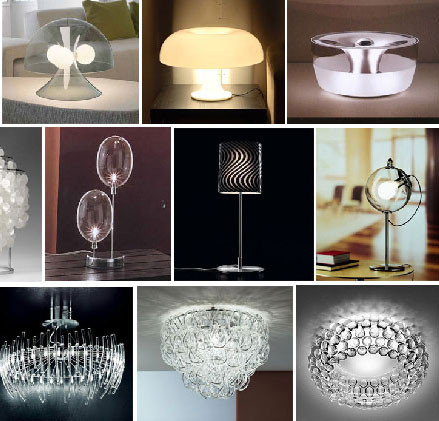With entertainment and gaming systems, lights and other electrical devices, your living room can use a significant amount of electricity. These tips will help you save energy in your living room while increasing your comfort.
Energy Efficient Home Theater and Electronics
Consumer electronics can account for up to 15% of the electricity used in your home. Your home theater, gaming systems, personal computers and other electronic devices add to your quality of life, but can use a significant amount of energy even when they're turned off - which adds up to a big waste of money.
You can save energy by using a power strip as a central "shut off" point for your consumer electronics, so you can cut the power entirely when they're not being used. Unplug any cell phone chargers and other adapters when the equipment is fully charged or when the device is disconnected. ENERGY STAR products save energy when turned off, and still maintain features like clocks and user settings. Look for the ENERGY STAR logo when buying new equipment. You'll get the same quality and performance while saving energy.

Save Energy with Smart Lighting
Living room lights are some of the most used lights in the house. And a typical torchiere floor lamp can have the highest wattage bulb in the entire home. To save energy, always remember to shut the lights - and other electronic equipment - when leaving the room. You can start saving up to 75 percent on your lighting costs immediately by replacing your incandescent light bulbs with ENERGY STAR qualified LED bulbs or compact fluorescent bulbs (CFLs). ENERGY STAR qualified residential LED bulbs uses at least 75% less energy, and last 25 times longer than incandescent bulbs while providing optimal light color. Compact fluorescent bulbs provide high quality lighting and last up to 10 times longer than incandescent light bulbs.
ENERGY STAR qualified lighting fixtures help you save even more when used with CFL bulbs or LEDs.

Stay Cool While Using Less Energy
Ceiling fans help keep you cooler in the summer and warmer in the winter and help you lower your energy costs. You can lower your air conditioning costs by up to 14% by increasing the temperature on your thermostat by two degrees on hotter days and using the ceiling fan to cool you down. Make sure the blades are turning counter-clockwise (downward) to maximize cooling action. If your ceiling fan has a light fixture, use CFL bulbs which run much cooler than incandescents and use 75% less energy.
Your ceiling fan can also keep your warmer in the winter. Running the fan at low speed in a clockwise (upward) direction creates a delicate updraft that pushes warm air down from the ceiling. The circulation of warm air keeps your heating source from working as hard, and allows you to lower the thermostat to save energy.
Use the Sun's Heat - Or Block it Out
In cold weather, let the sun shine in and warm up your home. Keep blinds and drapes open during daylight hours to take advantage of the sun's warmth. Reverse the process in the summer to keep the heat out. In the summer, keep blinds and shades closed during the day to reduce the amount of heat that penetrates into your home. Your air conditioner won't have to work as hard to keep you cool, which saves energy.
Keep Air Register Clear
Make sure that the air vents in your home aren't being blocked by furniture, so the air can circulate in the room. If you have radiators, put heat-resistant reflectors between the radiators and the walls during the winter so you heat the room instead of the walls.
Is Air Leaking Out Your Chimney?
If you have a fireplace, make sure the flue damper is closed tightly when not in use to prevent heated or air-conditioned air from escaping through the chimney. The temperature difference between your home and the outdoors creates an updraft that's designed to remove smoke from a fire in the fireplace. But even when there's no fire, the updraft will pull air right up through the chimney. An inflatable chimney plug is a great way to seal off your chimney when not in use, to keep the air that you paid to heat or cool inside your home.
Energy Efficient Windows
Most heat enters or escapes your house through the windows. To combat heat escape during winter, install storm windows, which provide another barrier for the heated air to escape, and from cold air drafts. If you can't afford storm windows, use plastic window covers. If you're replacing your windows, look for ENERGY STAR windows which can save you up to $95 on your energy bills. Have your windows installed and air sealed by a professional so you get all the energy savings and maximize your comfort.
Learn how to fix problems with moisture on windows.
Home Sealing
Seal any holes with caulk or spray foam where pipes or TV/cable wires and vents enter or exit your home.
Sealing your home's "shell" or "envelope" is a cost-effective way to improve your comfort and lower your energy bills by around 10% (or more, depending on the condition of your home). By sealing cracks, gaps and holes, you'll reduce uncomfortable drafts and help prevent moisture problems. Use ENERGY STAR's Guide to Home Sealing (2MB), or hire a contractor for professional service.
Useful Energy Efficient Solutions:
- Attic Attic Ventilation, Duct Sealing, Chimney Sealing
- Basement Retire your old refrigerator!, Dehumidifier, Water Heater
- Bathroom Vanity Lights, Light Switch, Vent Fan
- Bedroom Bed-Side Lamp, Light Switch, Room Air Conditioner
- Dining Room Light Fixture, Light Switch, Programmable Thermostat
- Heating and Cooling Systems Table Lamp, Light Switch ...
- Home Office Desk Lamp, Ducts, Electrical Outlets, Power Strip
- HVAC HVAC air conditioning. HVAC Maintenance. HVAC contractor.
- Kitchen Light Fixture, Light Switch, Floor Vents/Radiators
- Living Room Table Lamp, Ceiling Fan with Lighting, Light Switch
- Outside House A/C Unit, Porch Light, Thermal Boundary
- Energy Efficient Windows Replace or Renovate, Energy Efficient Window Treatments
We were unaware of what was involved in an energy audit and your audior took the time to explain everything. We were impressed with the report which told us the areas in which we need to take action on. He never pressured us to use any particular contractors, he just suggested that we go to the Building Energy Pros web site to select contractors of our own choice. He did an excellent job and we HIGHLY recommend the Building Energy Pros. We already have recommended them to several of our neighbors. Again, EXCELLENT JOB!
Cynthia Simpson
The Building Energy Pros auditor was very knowledgeable. I was VERY HAPPY with him. He promptly E-mailed my energy audit report to me and I will consider all of his recommendations.
Tom McGee
We found out that our house really has no energy problems. We are happy to know that we
Leslie Stewart
I was very satisfied with your energy auditor. He was very qualified and spent a great deal of time with me. The energy audit was very informative.
P.B.
The energy auditor was very good and helpful. He keeps in touch with me to answer any of my questions.
D.G.
I was very satisfied with my energy audit. The auditor gave me some tips on attic insulation that were very helpful.
R.G.
I was very satisfied with my energy audit. Thank you!
R.S.
Very good service! I am going to replace the windows as the auditor had suggested.
D.W.
I was very happy with the energy audit. THANKS!
A. M.
My energy audit was very helpful. Joe Dempsey, your auditor, identified some structural problems that I was not aware of and explained to me why I need more insulation.
J. F.
The auditor was EXCELLENT! He spent ALOT of time with me. I am going to take 3 to 4 of his suggestions and correct these small items to save on my energy bills.
M. B.
The auditor did a GREAT JOB! He knew a lot about older homes, which we have. The report was very comprehensive. Thank you!
Vicki Nez/at
Your energy auditor was very nice and helpful. He answered all of our questions. We will recommend Building Energy Pros to our friends and neighbors.
Katherine McCaffrey
The auditor did a TERRIFIC JOB! The report was FANTASTIC! I will make all the repairs he suggested. I will definitely recommend him to everyone I know that could benefit from a home energy audit.
Steve Sleigh, Chevy Chase
The energy auditor was very professional and I am very satisfied with both the energy audit and the report I received. I will be referring the Building Energy Pros.
Tim Clary
I was very satisfied with the auditor. He was great and gave me some very valuable information. I will refer him to people I know who may need a home energy audit.
Willie Gantt
Your home energy audit proved to be very informative and helpful. I was not aware of the updraft created inside our walls because of the balloon framing construction. You said that that can cause heat to be pulled out of the house with the draft going up inside the walls and should be re-mediated. You also said that the attic insulation was insufficient and that fiberglass batts can leave spaces for around the edges causing heat loss and that it should have blown in insulation on top of what was there to seal the whole attic and increase the r factor. After going over your findings and telling me how you would fix the problems you told me how I could do it myself with stuff from the Home Center and for a quarter of the cost. Well, I did. I went into the basement and filled the bottom of the wall joist with unfaced insulation where they set on the sill plate. I then cut one inch foam board the size for each space and set it in and the sealed the edges of that with expanding foam as well as the sill plate to the foundation. I also sealed the sill plate to the foundation where the joist ran along it, as well as the top of those joist where it made contact with the subflooring. Next I went to the home center and rented their blown insulation machine and got ten bales of the insulation. I filled the attic on top of the batt insulation with about six inches giving another r-19 factor on top of the r-19 that was there. You said that the blown in would also help seal the heat loss around the edges of the batt. The work in the basement cost $144.00 and the work in the attic cost $328.00. After the 30% federal energy tax credit it will end up costing me about $330.00, which you said I should recover in savings in the first year. Thank You for all your advice and expertise. You made me aware of things I should consider and did.
Tommy Thompson



